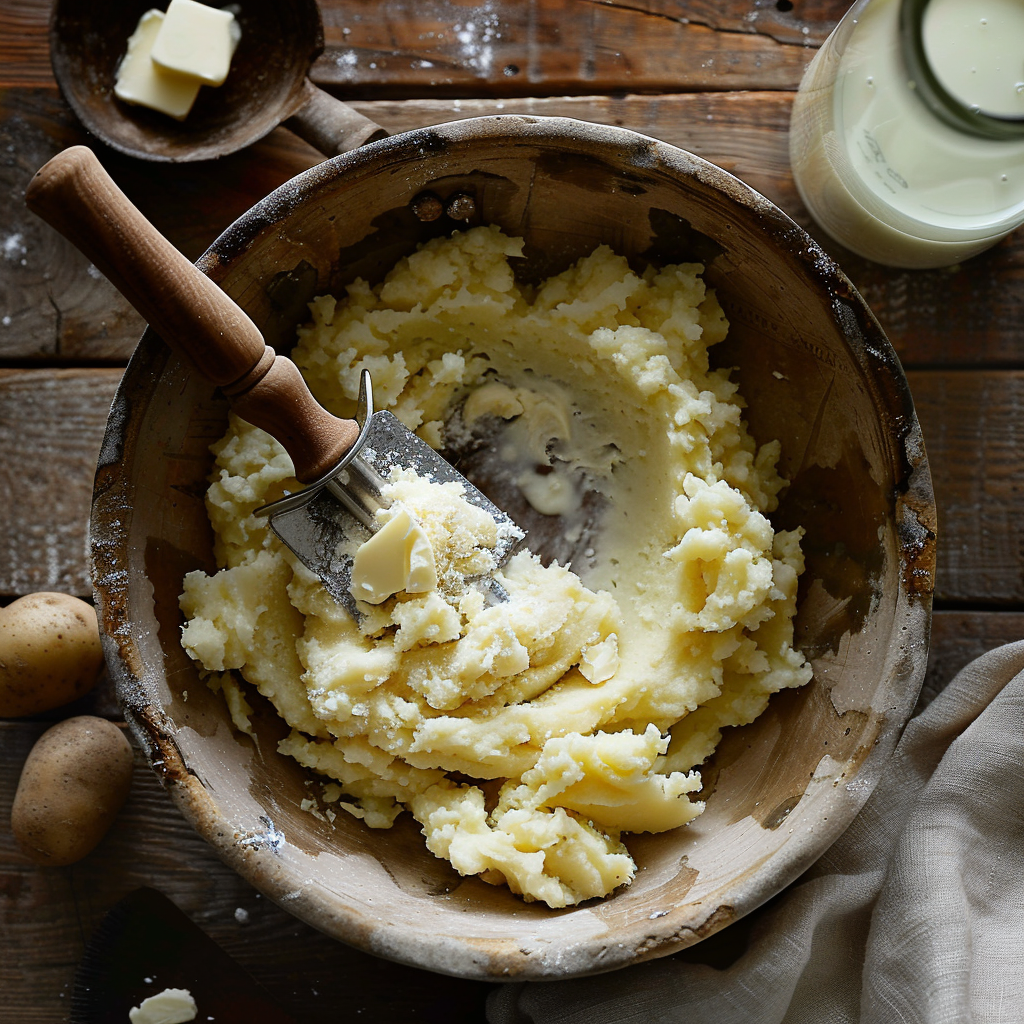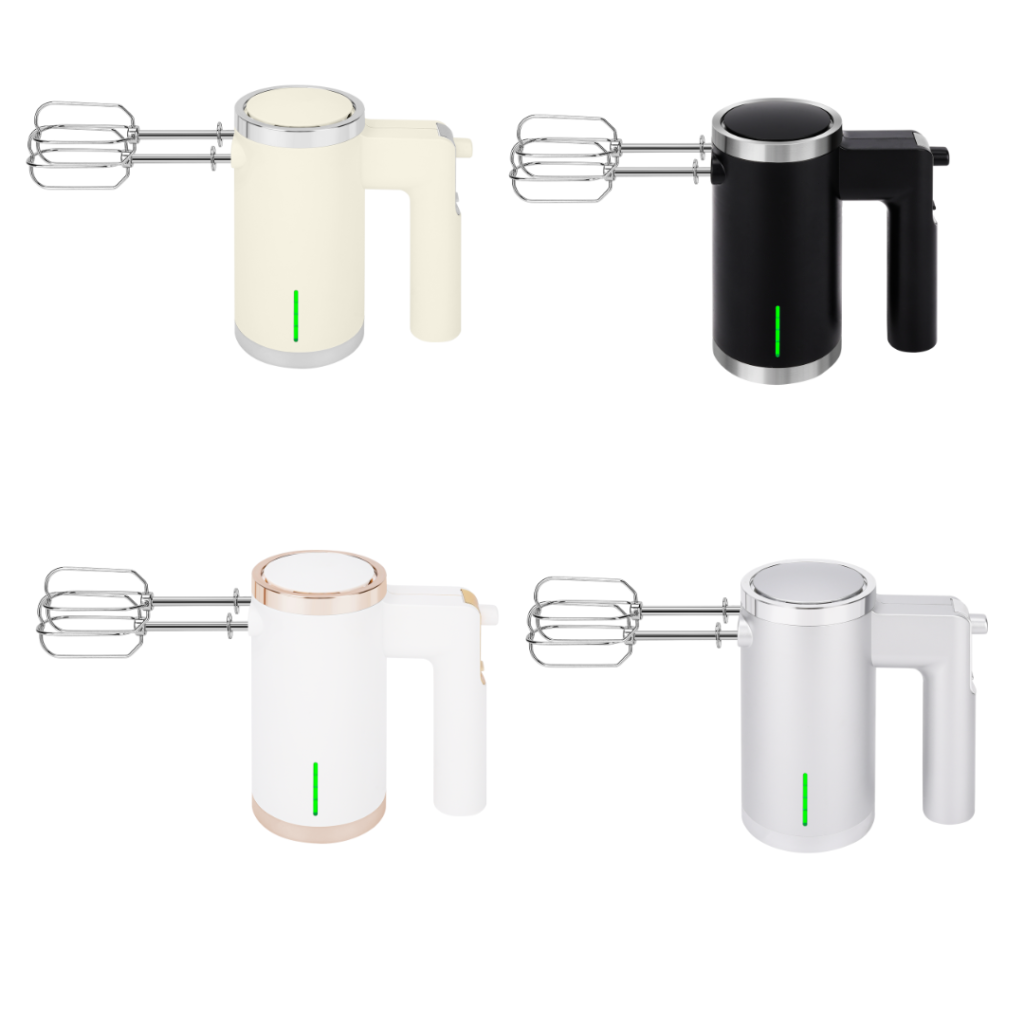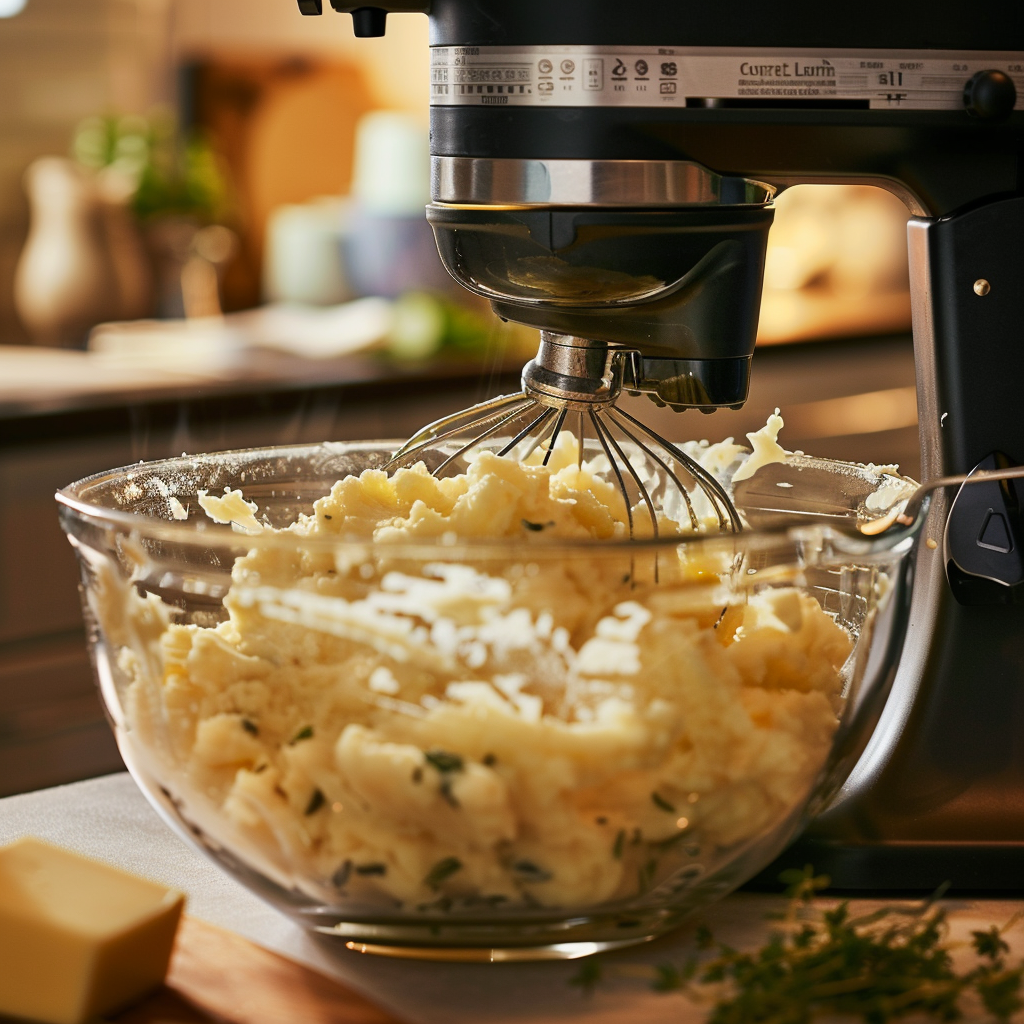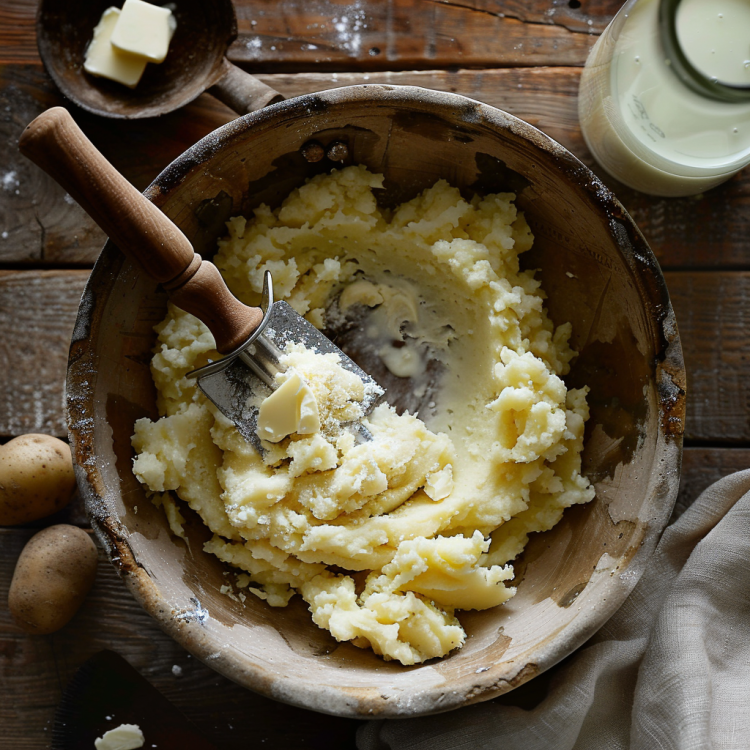
Problem: Mashed potatoes are a comfort food favorite, but achieving the perfect consistency can be tricky. Many cooks struggle with getting the right balance between creamy and fluffy without ending up with a lumpy or gluey mess. You might be tempted to reach for your immersion blender, a versatile kitchen tool that’s great for soups and sauces, but is it suitable for mashed potatoes? This is a common question, especially when you’re looking for a quick and easy way to prepare this classic dish without the hassle of manual mashing.
Solution: Yes, you can use an immersion blender for mashed potatoes, but with some important caveats. The immersion blender’s powerful motor and sharp blades can quickly break down potatoes, but if used improperly, it can lead to over-processing. This results in the potatoes releasing too much starch, turning what should be a fluffy, creamy side dish into a sticky, glue-like paste. The key is to use the blender in short, controlled bursts and monitor the texture closely. Start by blending on the lowest setting, and pulse gently rather than holding the button down continuously. As soon as the potatoes reach your desired consistency, stop blending immediately. Adding ingredients like butter, cream, or milk gradually can help you control the texture and prevent the potatoes from becoming too thick or too thin.
However, if you’re aiming for the best possible texture—smooth yet airy—a traditional potato masher or a ricer might still be your best bet. These tools are specifically designed to mash potatoes without overworking them, giving you that perfect balance of fluffiness and creaminess. In summary, while an immersion blender can be used for mashed potatoes, it requires careful handling to avoid compromising the texture.
Can You Use an Immersion Blender Instead of a Mixer?
Consideration: When you’re whipping up a recipe that traditionally calls for a stand mixer, you might wonder if your immersion blender could step in to save time and space. After all, immersion blenders are highly versatile, often taking on the tasks of multiple kitchen gadgets. But can it really replace a stand mixer in tasks like whipping cream, beating eggs, or mixing dough?
Answer: While an immersion blender can handle certain tasks typically assigned to a mixer, it’s not a perfect substitute, especially for heavier or more complex jobs. Immersion blenders excel at blending, pureeing, and making smooth sauces or soups directly in the pot. They can even be used to whip cream or beat eggs in a pinch, thanks to their high-speed blades. However, they lack the power and stability needed for more demanding tasks, such as kneading dough or creaming butter and sugar together for baking. Stand mixers, with their variety of attachments and robust motor, are designed to handle these tasks with ease and consistency, something an immersion blender just can’t match.
For light mixing tasks, such as making pancake batter or whipping cream, an immersion blender can be a convenient alternative. It’s particularly useful if you’re short on space or don’t want to deal with the cleanup of a larger appliance. However, the immersion blender’s design—meant to be held and moved by hand—means it doesn’t offer the same level of control and thoroughness as a stand mixer. It’s easy to over-mix or under-mix ingredients when using an immersion blender for these purposes, leading to inconsistent results.
In conclusion, while an immersion blender can stand in for a mixer in some scenarios, it’s not a one-size-fits-all solution. If you frequently bake or prepare dishes that require heavy mixing, investing in a stand mixer will pay off in both quality and convenience. However, for simpler or smaller tasks, an immersion blender can be a handy and efficient tool.

Can I Use a Hand Mixer Instead of a Potato Masher?
Practicality: Potato mashers have long been the go-to tool for making mashed potatoes, but they require a fair amount of manual effort. If you’re looking for a less labor-intensive method, you might consider using a hand mixer. But how does this electrical device stack up against the traditional mashing method?
Answer: Yes, you can use a hand mixer instead of a potato masher, and it can make the process significantly easier and faster. A hand mixer, with its rotating beaters, can quickly break down cooked potatoes, creating a smooth and consistent mash. This is particularly helpful if you’re making a large batch of mashed potatoes or if you have limited strength or dexterity in your hands. The key to using a hand mixer effectively for mashed potatoes is to start with properly cooked potatoes—soft enough that a fork can easily slide through them—and to use the mixer on a low speed setting.
However, there are a few things to keep in mind when using a hand mixer for this purpose. The most significant risk is over-mixing, which can lead to a gummy texture. Potatoes contain starch, and when overworked, that starch turns into a gluey substance that can ruin the texture of your mashed potatoes. To avoid this, mix just until the potatoes are smooth and all lumps are gone, stopping frequently to check the consistency. It can also help to add the butter, milk, or cream slowly, incorporating it as you go to achieve the right texture without overworking the potatoes.
In summary, a hand mixer can be an excellent alternative to a potato masher, offering ease and speed, especially for those who prefer a smoother texture. Just be mindful of the mixing time and speed to avoid turning your mashed potatoes into a gluey mess.
What Can You Use Instead of a Potato Masher?
Alternatives: Sometimes, you find yourself in the kitchen ready to make mashed potatoes, only to realize you don’t have a potato masher on hand. Don’t worry—there are several other tools you can use to achieve the same result, each with its own advantages.
Answer: There are quite a few kitchen tools that can be used in place of a potato masher. Each alternative offers different benefits, depending on the texture you’re aiming for:
- Fork: A fork is one of the simplest tools you can use to mash potatoes. It’s particularly useful if you’re making a small batch or if you prefer a chunkier texture. The tines of the fork break up the potatoes, and with some effort, you can create a fairly smooth mash. The downside is that it can be labor-intensive and may not produce the ultra-smooth texture that some people prefer.
- Ricer: A potato ricer is often hailed as the best tool for making mashed potatoes. It works by forcing the potatoes through small holes, creating a light, fluffy texture without overworking the starches. Ricers are especially good if you want perfectly smooth, lump-free potatoes, and they’re easy to use, though they do require an additional step of pressing the potatoes through the ricer.
- Food Mill: Similar to a ricer, a food mill is excellent for creating smooth, lump-free mashed potatoes. It’s especially useful if you want to incorporate other ingredients, like roasted garlic or herbs, as you can mix them in directly as you mill the potatoes. A food mill also separates any unwanted skins or lumps, making it a versatile tool for mashed potatoes and other purees.
- Immersion Blender: As discussed earlier, an immersion blender can be used with caution. It offers convenience and speed, especially if you’re short on time or equipment. However, it’s easy to overdo it, resulting in a gluey texture if you’re not careful.
- Stand Mixer: A stand mixer can also be used for mashing potatoes, especially if you’re making a large batch. It offers consistent results with minimal effort, but like the immersion blender and hand mixer, it can overwork the potatoes if you’re not careful.
In conclusion, while a potato masher is a traditional and reliable tool, there are several alternatives depending on what you have on hand and the texture you prefer. Whether you’re looking for something chunkier or ultra-smooth, there’s a tool in your kitchen that can help you achieve the perfect mashed potatoes.

Can I Use an Immersion Blender Instead of a Food Mill?
Utility: A food mill is a specialized tool often used for pureeing fruits, vegetables, and even making mashed potatoes. But if you don’t have one, you might consider using an immersion blender. However, these two tools are quite different in function and results.
Answer: While you can use an immersion blender instead of a food mill in some cases, the results will differ significantly. A food mill works by manually grinding and straining food through a perforated disk, which not only purees the food but also separates out any seeds, skins, or other unwanted parts. This makes it ideal for preparing smooth, seedless sauces, purees, and mashed potatoes.
An immersion blender, on the other hand, doesn’t have this filtering ability. It purees everything together, which is fine for soups and sauces where a bit of texture is acceptable, but it might not be ideal for all recipes. For instance, if you’re making tomato sauce and want to remove the seeds and skins, an immersion blender won’t be able to achieve that. Similarly, if you’re making mashed potatoes and want them to be ultra-smooth without any lumps, an immersion blender can do the job, but it might not be as effective as a food mill in producing a fine, even texture.
That said, an immersion blender is much faster and more convenient for many tasks, especially when you’re working directly in a pot or bowl. It’s versatile and easy to clean, making it a go-to for quick blending tasks. If you’re in a pinch and don’t have a food mill, an immersion blender can be a decent alternative for certain recipes, but it won’t completely replicate the results of a food mill.
In conclusion, while an immersion blender can replace a food mill in some situations, it’s not a perfect substitute. If texture and precision are critical for your recipe, and you need to remove unwanted parts like skins or seeds, sticking with a food mill or another straining tool is advisable. For more general pureeing tasks, though, an immersion blender is a convenient and effective option.
Is It Okay to Use an Electric Mixer for Mashed Potatoes?
Considerations: Electric mixers are powerful kitchen tools, often used for baking and other tasks that require thorough mixing. But when it comes to mashed potatoes, their power can be both a blessing and a curse. Is it okay to use an electric mixer, or should you stick to manual tools?
Answer: Yes, you can use an electric mixer for mashed potatoes, but there are some important considerations to keep in mind to ensure you don’t end up with gluey potatoes. The main concern with using an electric mixer is the risk of over-mixing. Potatoes are full of starch, and when these starches are overworked, they break down and create a gummy, unappetizing texture. An electric mixer, especially on higher speeds, can quickly overwork the potatoes, leading to this undesirable result.
To use an electric mixer effectively, start by cooking your potatoes until they are very soft. Drain them well and return them to the pot to dry out a bit over low heat. Then, using your electric mixer on the lowest speed, start by gently mixing the potatoes to break them up. Add your butter, cream, or milk gradually, continuing to mix just until the potatoes reach your desired consistency. It’s crucial to stop mixing as soon as the potatoes are smooth, as over-mixing can happen very quickly.
Electric mixers are particularly useful if you’re making a large batch of mashed potatoes and want to save time and effort. They can create a very smooth, uniform texture, which is perfect for those who prefer their mashed potatoes to be creamy without any lumps. However, if you’re after a more rustic, chunky texture, you might prefer to stick with a manual masher or a ricer.
In conclusion, while it’s okay to use an electric mixer for mashed potatoes, it’s essential to use it carefully. Stick to low speeds, mix for short periods, and keep an eye on the texture to avoid overworking the potatoes. When done right, an electric mixer can produce beautifully smooth mashed potatoes with minimal effort.

Conclusion:
Using an immersion blender for mashed potatoes is a viable option, though it requires careful attention to avoid turning the dish into a gluey mess. Exploring different tools, from hand mixers to ricers, each offers unique benefits and results. Whether you stick with traditional methods or opt for more modern tools like an electric mixer, understanding the nuances of each option will help you achieve the perfect mashed potatoes tailored to your preference.



